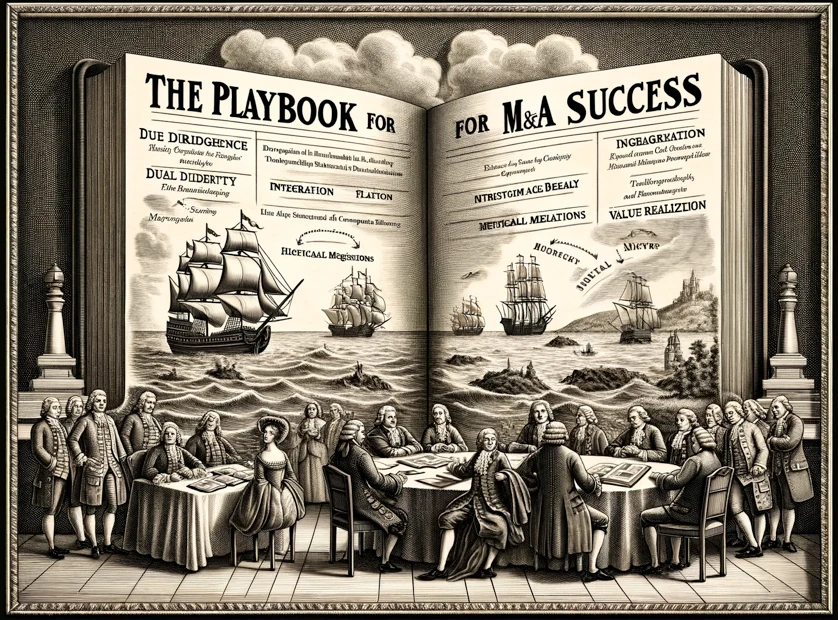How Can Companies Strategically Align Their M&A Integration Process With Their Corporate Vision to Achieve Deal Success?

The Objective of the M&A Integration Playbook
In the complex process of mergers and acquisitions, the step that often determines the rhythm of success is integration. The objective of the M&A Integration Playbook is to serve as the choreographer for this complex performance. It is crafted with the precision of a master strategist, aiming to transform the potential chaos of M&A into a harmonious alignment of processes, people, and purposes. The playbook’s mission is to equip companies with a clear, actionable plan that addresses the multifaceted challenges of M&A, ensuring that the envisioned synergies are not just theoretical but achievable.
Understanding Audience and Structuring Content
The M&A Integration Playbook is designed for the architects of corporate growth: CEOs, CFOs, M&A Leaders, Functional Leaders, and all stakeholders involved in the M&A process. Its structure is both a map and a manual, guiding team members through the uncertainty and challenges of integration with a clear, step-by-step approach. It is segmented into digestible chapters that correspond to each critical stage of the M&A journey, from pre-deal due diligence analysis to post-merger integration, ensuring that every team member, regardless of their prior experience, can navigate the M&A terrain with confidence.
Navigating the M&A Deal Lifecycle and Deal Classifications
Understanding the M&A deal lifecycle is similar to navigating an ocean voyage; it represents a journey of transformation. The playbook delineates this journey into distinct phases: setting sail, which combines due diligence, valuation, deal structuring, and negotiation; navigating through uncharted waters, focused on integration planning; steering through the voyage, marked by the execution of the integration plan; and finally, reaching the destination, where value realization and continuous improvement are achieved. Each phase is clearly defined, offering a navigational guide for the journey.
Moreover, the playbook recognizes that not all M&A deals are created equal. It classifies them into categories such as horizontal, vertical, conglomerate, and market-extension mergers and acquisitions, each with its strategic nuances. This classification is not merely academic; it is a practical tool that shapes the integration strategy, ensuring that the approach is tailored to the unique dynamics of the deal.
Balancing Strategic Priorities in M&A Integration Playbooks
The M&A Integration Playbook provides for an approach that is both systematic and adaptive. It understands that M&A integration is not a one-size-fits-all process but an orchestration that requires different movements for different scenarios. The playbook provides a framework that is robust enough to support the weight of any deal, yet flexible enough to accommodate the unique challenges and opportunities that each merger or acquisition presents.
This approach is built on the pillars of strategic alignment, operational efficiency, cultural integration, and stakeholder communication. It underscores the critical importance of aligning the integration strategy with the overarching business objectives, the corporate strategy, and the deal thesis. This comprehensive alignment ensures that every action taken in the integration process is a deliberate step towards achieving the broader strategic growth goals of the M&A deal, thereby reinforcing the synergy between the deal’s purpose and the company’s long-term vision.
Charting a Path Towards M&A Excellence
The M&A Integration Playbook is more than just a document; it serves as a reliable compass for navigating the complex and dynamic seas of M&A. It presents a pathway towards M&A excellence, fortified by its detailed and tested methodologies. The insights and principles within the playbook, drawn from past experiences and expert knowledge, offer a comprehensive guide to transforming M&A aspirations into enduring success. This exploration into the playbook will uncover the nuances of mastering M&A integration, providing valuable lessons gleaned from a wealth of strategic endeavors.